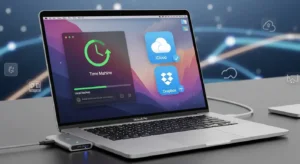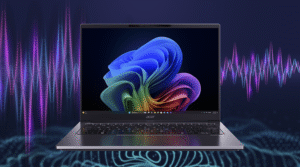In the fast-evolving world of technology, artificial intelligence (AI) has become one of the most revolutionary forces shaping industries. From content creation to design and development, AI tools are now capable of performing tasks that were once strictly within the human domain. But this sparks a heated debate — AI vs Human Creativity. Can these intelligent systems truly replace the imaginative power of human designers and developers? Or will they simply serve as supportive tools that enhance, rather than replace, human ingenuity?

The Emergence of AI in Creative Industries.
Artificial intelligence has achieved great milestones in designing and development. The creativity AI Assistant of Figma, Adobe Firefly, and ChatGPT tools have reshaped the work of creative professionals. People are now building AI-based tools such as GitHub Copilot and Ghostwriter on Replit that auto-generated code and propose solutions in real time. Equally, designers use AI-based design tools that have the ability to create color palettes, layouts, and even complete versions of mockups within seconds.
It no longer requires hours of brainstorming, sketching and refining what once took hours. These tools do not only make the creative process faster, but also open it to non-experts. The owner of a business who has no design or coding expertise can now build a somewhat decent-looking site or application through the use of AI tools.
But with such advanced technology, so many people would want to know, are we getting to the point when AI is going to fully occupy the creative space?
The Strength of Human Creativity.
In the case of AI vs Human Creativity, there is one thing that cannot be denied, and this is that creativity is human. It is not only about generating ideas but about correlating emotions, experiences and views with the aim of generating meaning. Designers and developers do not simply construct, but they narrate through their construction.
To make an illustration, a designer creates a brand identity, and it is not about the shapes and colors only, it is about grasping the essence of the brand, the voice of the brand, and the emotional appeal of the brand. Analogously, a developer writing code of a user interface does not just speculate about functionality, he or she also speculates about what users will experience in terms of interaction.
AI tools, no matter how advanced, still lack this emotional depth. They operate on data, patterns, and probabilities, but they don’t “feel.” They don’t experience the spark of inspiration that comes from a walk in the park or a conversation with a client. Human creativity draws from intuition, culture, empathy, and emotion — qualities that AI can imitate but never truly possess.
Where AI Excels
It does not mean that AI does not have its strengths. When it comes to the AI vs Human Creativity, AI is undoubtedly faster, more precise, and it can be scaled. In things that are repetitive and data-driven, AI cannot be compared. It is capable of examining large data sets, identifying design or code patterns, and providing design/code recommendations quicker than a human being.
Creative blocks are also eradicated with the assistance of AI. As an example, AI-created mockups can be used to jump-start the designers who lack inspiration. Artificial intelligence can provide developers with suggestions to eliminate bugs or investigate novel methods of coding that they would not have considered otherwise.
In essence, AI is an assistant in terms of creativity – it promotes efficiency and minimizes human error. The true magic occurs when human beings and AI work together instead of competing.
The weaknesses of AI in Creativity.
AI has limitations, regardless of its strength. It relies on the data on which it is trained to be creative. This implies that AI will be able to duplicate styles and not go further than that. It is able to recycle what is already there but it is unable to create something new or something truly ground breaking.
This has the effect in design of creating outputs that may be generic or soulless. As much as AI can give a suggestion of a hundred logo ideas, an experienced designer can produce one that perfectly reflects the personality of a brand. In development, AI can be used to write clean code, though it will not anticipate the user experience or edge cases that are human-judged.
Additionally, AI work usually fails to capture the cultural subtleties, narration, and feelings that human works are noted to contain.
The Future: The Future of collaboration, rather than competition.
Creativity in the future is not about the AI vs Human Creativity, but it is about collaboration. The most successful professionals will be the ones who consider AI a co-creator. Those designers and developers that use AI tools to run mundane functions will have time to be innovative, strategic and storytellers, which the human mind excels the most at.
Creatives cannot be replaced, but they should look at AI as a resource that will contribute to their work. It is just like how the photographers accepted the digital cameras or how the musicians have adjusted to the digital production. AI does not eliminate creative ability, but increases possibilities.
Final Thoughts
Therefore, are AI tools capable of substituting designers and developers? The response is no – not entirely. AI will be able to automate, accelerate, and help, but not imagine. It is able to work with the data, yet it is not able to dream.
Creativity in the future is going to be a matter of balance, in that man will give the emotion, originality, and empathy, whereas AI will give speed, precision, and information-driven insights. Collectively, they are able to establish the new meaning of creating.
Ultimately, it is not AI vs Human Creativity but a collaboration that will lead to the next stage of innovation.




